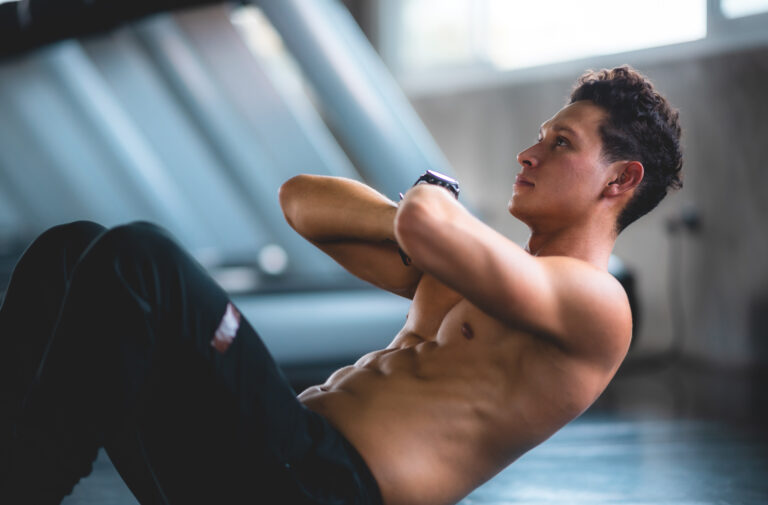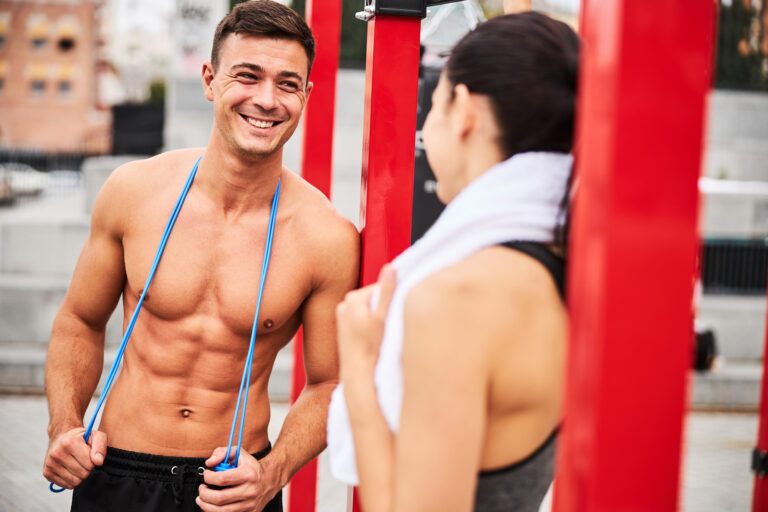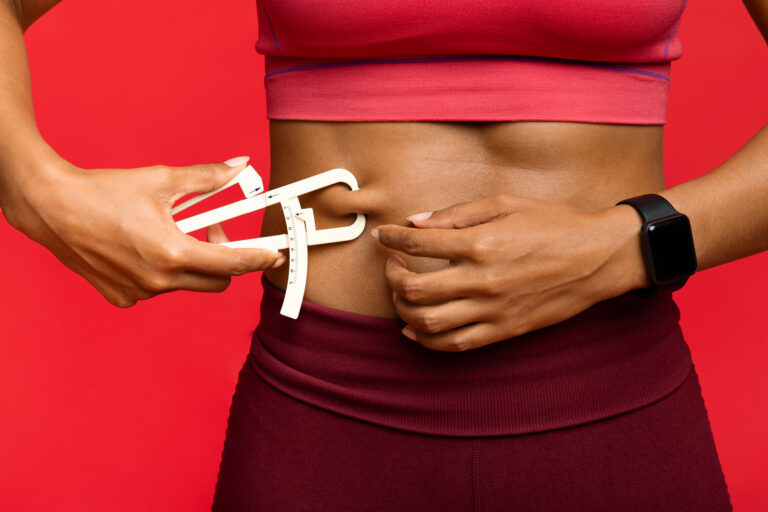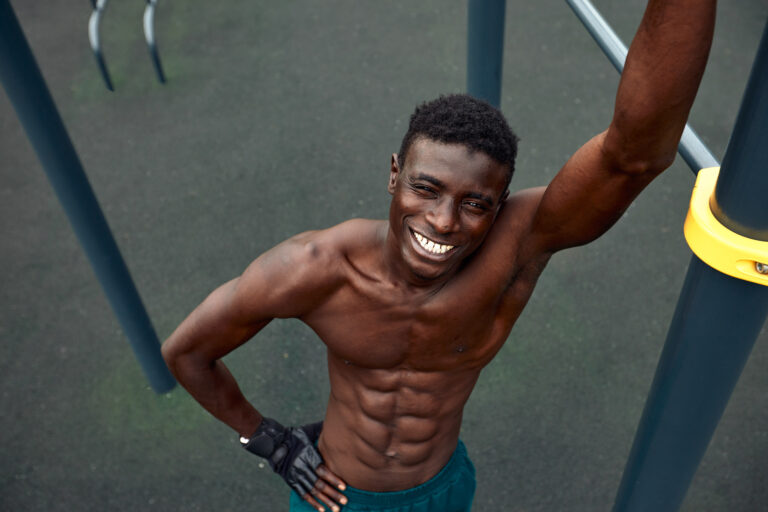What is the Deltoid?
The deltoid muscle, a prominent feature of the human shoulder, plays a vital role in many upper body movements. Comprising three distinct heads – the anterior, lateral, and posterior – this muscle is crucial for a range of activities from lifting and throwing to maintaining shoulder stability. Understanding the structure and function of the deltoid can enhance training effectiveness and injury prevention.
Anatomy and Function
General Structure of the Deltoid Muscle
The deltoid muscle is named after the Greek letter delta, which resembles a triangle. It forms the rounded contour of the shoulder and is a key player in shoulder movement. The deltoid originates from three different points: the clavicle (collarbone), the acromion (a bony process on the shoulder blade), and the spine of the scapula (shoulder blade). These points converge into a single tendon that inserts into the deltoid tuberosity on the humerus (upper arm bone).
The deltoid muscle fibers are divided into three groups, each contributing to different shoulder movements. This multi-pennate structure allows the deltoid to generate substantial force, making it essential for various arm actions. Its unique design enables it to cover the shoulder joint, providing protection and enhancing the joint’s stability.
Anterior Deltoid
The anterior deltoid, located at the front of the shoulder, originates from the lateral third of the clavicle. Its fibers run obliquely and insert into the deltoid tuberosity of the humerus. This head is primarily responsible for shoulder flexion, which involves raising the arm forward. It also assists in medial rotation, bringing the arm towards the body’s midline.
When engaging in activities like lifting weights or performing push-ups, the anterior deltoid is heavily activated. It works synergistically with the pectoralis major (chest muscle) during these movements. For athletes, particularly those in sports requiring overhead actions such as basketball or volleyball, a well-developed anterior deltoid is crucial for performance.
Lateral Deltoid
The lateral deltoid, also known as the middle deltoid, originates from the acromion process of the scapula. Its fibers run vertically down the side of the shoulder and converge at the deltoid tuberosity. This head is primarily involved in arm abduction, which means lifting the arm away from the body. It plays a significant role in movements that require the arm to be raised to the side.
This portion of the deltoid is often targeted in shoulder training routines to create a broader shoulder appearance. Exercises like lateral raises and overhead presses are effective in stimulating the lateral deltoid. For athletes, this head is essential for stabilization during lateral movements and overhead actions, contributing to overall shoulder strength and endurance.
Posterior Deltoid
The posterior deltoid is located at the back of the shoulder and originates from the spine of the scapula. Its fibers run horizontally and insert into the deltoid tuberosity of the humerus. This head is primarily responsible for shoulder extension, which involves moving the arm backward. It also aids in external rotation, turning the arm outward.
Activities that engage the posterior deltoid include rowing, pulling exercises, and any motion that requires the arm to move backward or rotate externally. This head is crucial for athletes in sports that involve throwing or swimming, as it helps generate power and maintain shoulder stability. A strong posterior deltoid can also counterbalance the anterior deltoid, preventing muscular imbalances and potential injuries.
Physiological Aspects
Muscle Activation and Mechanics
Understanding muscle activation and mechanics is vital for optimizing training and preventing injuries. The deltoid muscle’s three heads work together but also have specific roles depending on the movement. During shoulder flexion, the anterior deltoid is the primary mover, while the lateral and posterior heads provide stability and control. In abduction, the lateral deltoid takes the lead, with the anterior and posterior heads assisting in maintaining proper joint alignment.
The posterior deltoid is crucial during shoulder extension and external rotation, ensuring the arm moves smoothly and powerfully backward. Each head’s unique fiber orientation allows the deltoid to handle a variety of forces and angles, making it adaptable for different physical demands. For example, during a bench press, the anterior deltoid helps push the barbell away from the chest, while the lateral and posterior heads stabilize the shoulder joint.
Neurovascular Supply
The deltoid muscle receives its blood supply from the posterior circumflex humeral artery, which branches off the axillary artery. This blood flow is essential for delivering oxygen and nutrients, supporting muscle function and recovery. Nerve supply comes from the axillary nerve, a branch of the brachial plexus, which innervates the deltoid and provides the neural input required for muscle contraction and coordination.
Proper neurovascular function is critical for muscle health and performance. Compromised blood flow or nerve damage can lead to muscle weakness, atrophy, or chronic pain. For athletes, maintaining the integrity of these systems is paramount. Regular stretching, adequate hydration, and avoiding excessive pressure on the shoulder region can help preserve neurovascular health.
Development and Adaptation
Growth and Development
The deltoid muscle, like all skeletal muscles, undergoes significant changes from infancy through adulthood. In early childhood, muscle fibers grow in size and number, adapting to the increasing physical demands as children become more active. During adolescence, hormonal changes, particularly increased levels of testosterone, further stimulate muscle growth and strength.
As individuals age, maintaining muscle mass and strength becomes increasingly important. The deltoid muscle’s growth and development can be influenced by genetic factors, nutrition, and physical activity levels. Regular strength training can enhance muscle size and function, ensuring the deltoid remains robust throughout life. This is particularly important for older adults, as maintaining shoulder strength can prevent falls and enhance overall mobility.
Adaptation to Exercise and Training
The deltoid muscle adapts remarkably well to various forms of exercise. Strength training exercises like shoulder presses, lateral raises, and reverse flyes can significantly enhance the size and strength of the deltoid heads. Progressive overload, which involves gradually increasing the weight or resistance, is essential for stimulating muscle growth. For example, starting with 5 kg (11 lbs) dumbbells and gradually increasing to 20 kg (44 lbs) can yield substantial gains in muscle mass and strength.
Endurance training, such as swimming or rowing, can also enhance the deltoid’s ability to sustain prolonged activity. This type of training improves the muscle’s aerobic capacity, increasing its resistance to fatigue. Cross-training, which involves incorporating different types of exercises, can provide a balanced approach to deltoid development, ensuring all three heads are adequately stimulated and preventing overuse injuries.
Common Injuries and Treatments
Types of Deltoid Injuries
The deltoid muscle, given its extensive use in various activities, is susceptible to several types of injuries. Common issues include strains, tears, and tendinitis. Strains often result from overstretching or overloading the muscle, leading to microtears in the muscle fibers. These injuries typically present with pain, swelling, and reduced shoulder mobility.
Tears can occur in any of the three deltoid heads but are most common in the anterior and lateral heads due to their involvement in heavy lifting and overhead activities. Severe tears may require surgical intervention, particularly if there is a complete rupture of the muscle fibers. Tendinitis, an inflammation of the tendons, can develop from repetitive strain or improper lifting techniques, causing pain and discomfort in the shoulder area.
Prevention and Rehabilitation
Preventing deltoid injuries involves a combination of proper training techniques, adequate warm-up, and regular strength and flexibility exercises. Ensuring correct form during exercises, such as keeping the shoulders back and avoiding excessive weight, can reduce the risk of strains and tears. Incorporating rotator cuff strengthening exercises can also enhance shoulder stability, further protecting the deltoid muscle.
Rehabilitation from deltoid injuries typically involves rest, ice, compression, and elevation (RICE) during the acute phase. Physical therapy plays a crucial role in recovery, focusing on restoring strength, flexibility, and range of motion. Exercises like gentle shoulder stretches, resistance band exercises, and gradual weight lifting can help rebuild muscle function. For more severe injuries, such as complete tears, surgical intervention followed by a structured rehabilitation program may be necessary to achieve full recovery.
Key Takeaways
The deltoid muscle, comprising the anterior, lateral, and posterior heads, is essential for a wide range of shoulder movements and overall upper body strength. Understanding its anatomy, function, and the physiological aspects of muscle activation can enhance training and prevent injuries. Regular strength and flexibility exercises, combined with proper training techniques, are crucial for maintaining deltoid health. Whether for athletes or general fitness enthusiasts, a well-developed deltoid muscle contributes significantly to physical performance and shoulder stability.









